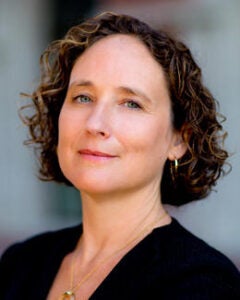< Back to Spring / Summer 2022
A Glass Half Full
The looming impacts of climate change often bring to mind record-breaking temperatures, intensified hurricane seasons and wildfires, and unrelenting droughts. The common thread running through essentially all of these difficult-to-predict impacts is the complex water cycle. As the planet warms, it draws more water into the atmosphere and renders longstanding climate patterns unpredictable.

This uncertainty sparks challenging questions not only about our weather — rising temperatures and extreme events — but also the way our species fundamentally functions. Nearly every major population center on the planet is situated along a major waterway. From the most ancient cities that arose along the Tigris and Euphrates rivers to modern coastal metropolises like Shanghai and Los Angeles, civilization is built on our capacity to predict and leverage water systems.
What happens when our relationship with water is no longer reliable? Already climate migrants flee lands rendered uninhabitable by rising sea levels or dried-up rivers that once enabled agriculture. Those who work in the fishing industry hoist empty nets from warmer, more acidic oceans. And heavy rainfall events cause erosion and runoff, adding more pollutants into the water supplies from which millions of people drink.
If all this sounds alarming, that’s because it is.
And that is why we at USC Dornsife are bringing new ways of thinking to society’s water challenges. Our researchers pursue a wide range of mitigation and adaptation strategies, allowing us to cautiously see the future as a glass half full. You’ll find some of their insights in this issue of USC Dornsife Magazine, along with a variety of perspectives on the theme of water — from its ability to surface creative inspiration to L.A.’s long and tempestuous relationship with this crucial natural resource. I hope you enjoy the read.
Amber D. Miller
Dean, USC Dornsife College of Letters, Arts and Sciences
Anna H. Bing Dean’s Chair